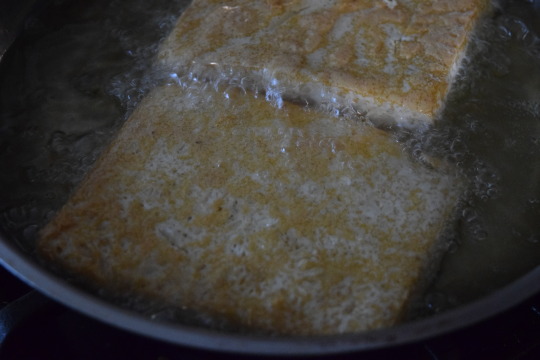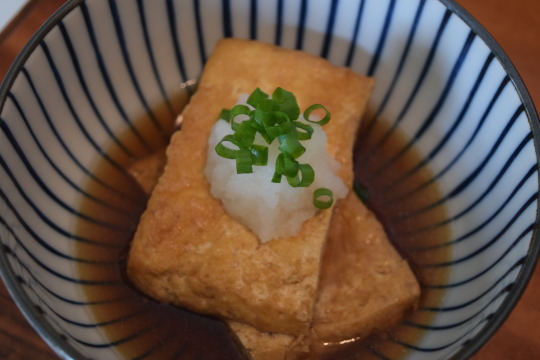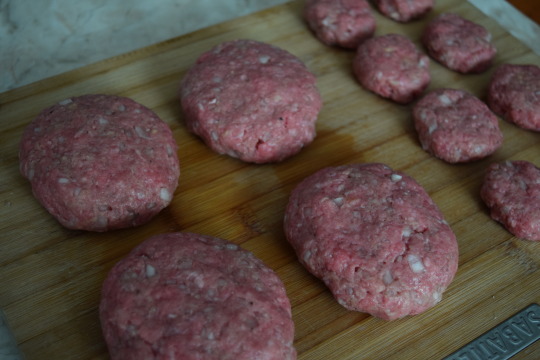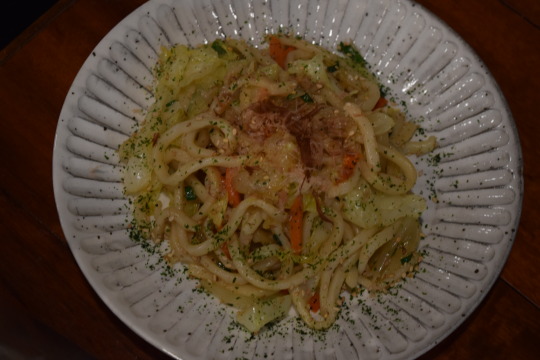
It is not chow mein. Udon is quite thick and fulfilling. This dish can be a great lunch and easy supper since you can basically choose the ingredients and have fun with it. In that sense, it’s a lot like Okonomi yaki (cabbage pancake). We can do so many different versions of this. There are no rules or restrictions, once you master this basic, you can tweak and work with udon as you like!

Since we had a big meat ball as a lunch today (Hamburg), I decided to make yaki udon, vegan.
Let’s see…
1. Chop the veggies. (As you see below, I chopped ½ of carrot, ½ med onions, 1/6 cabbage, and some green onions).

2. Since we can find this Udon noodle in any major supermarket now, I bought the one without any soup packets. I used two packs of noodles, called “Jumbo Udon” today. Yes, we can make the udon from scratch, but we should save it for another blog post :p

3. In a big pan (preferably a wok of some sort), allow oil to spread and heat up. Stir carrots and onions first until they are translucent. Then add cabbage.
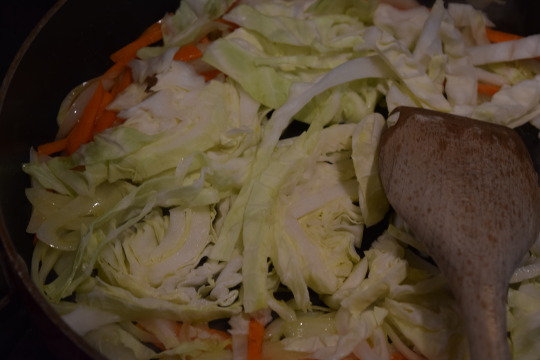
4. When the cabbage gets wilted, throw in the udon, seperate them without breaking the actual noodles.

5. Once it is separated and stirred, add 2.5 grams of easy powder dashi (konbu), 2 little spoons of cooking sake ,1 little spoon of soy sauce and 1 ½ little spoons of mirin.

6. Salt and pepper to your taste. Add some chopped green onions in the end.
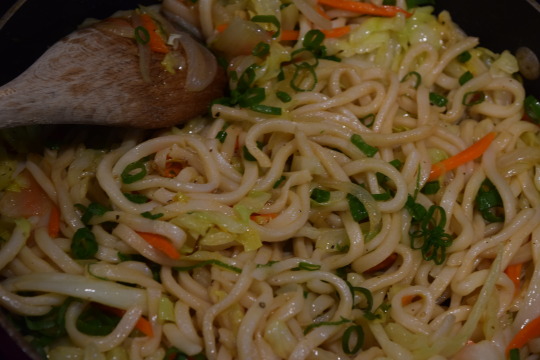
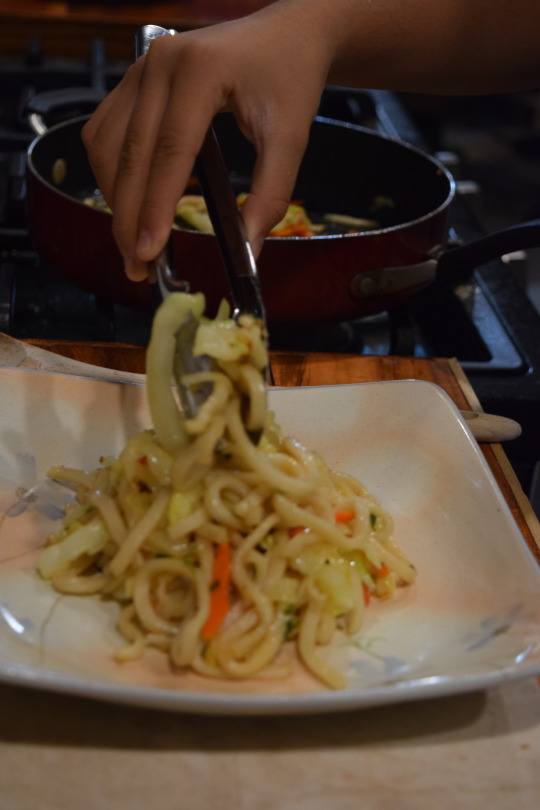
7. Optional but totally recommend are the toppings! Today, I used roasted white sesame, ao-nori (flakes of dried seaweed) and Katsuo bushi (flakes of dried bonito) to enhance the flavor.
You can do so many things with this! You can add some scrambled eggs, pieces of meat, fish cakes etc…
So home-like. So Japanese-y :)









